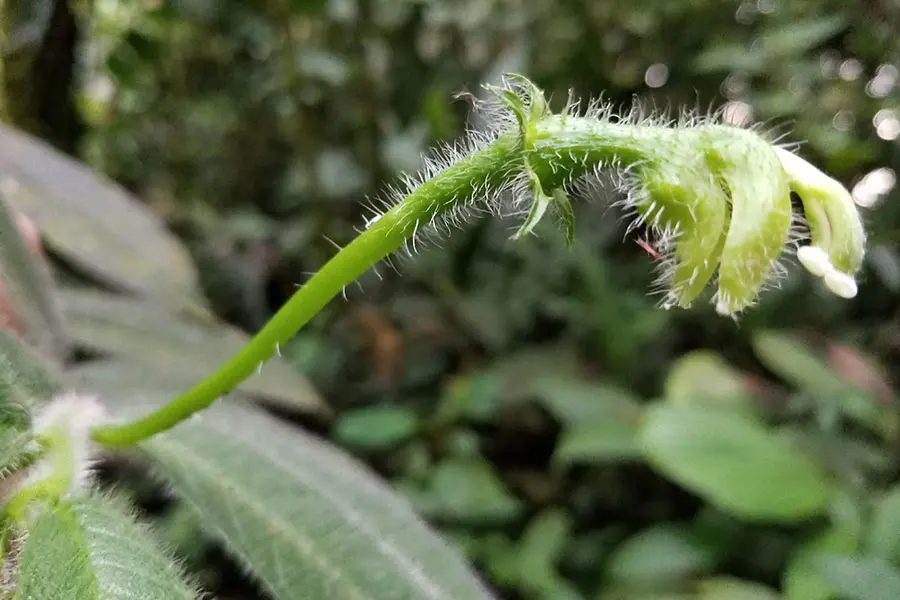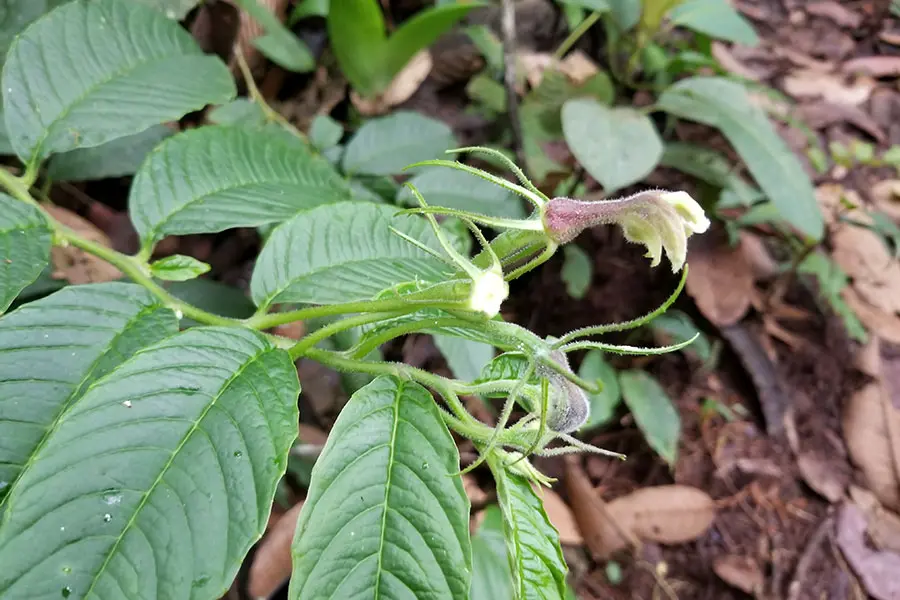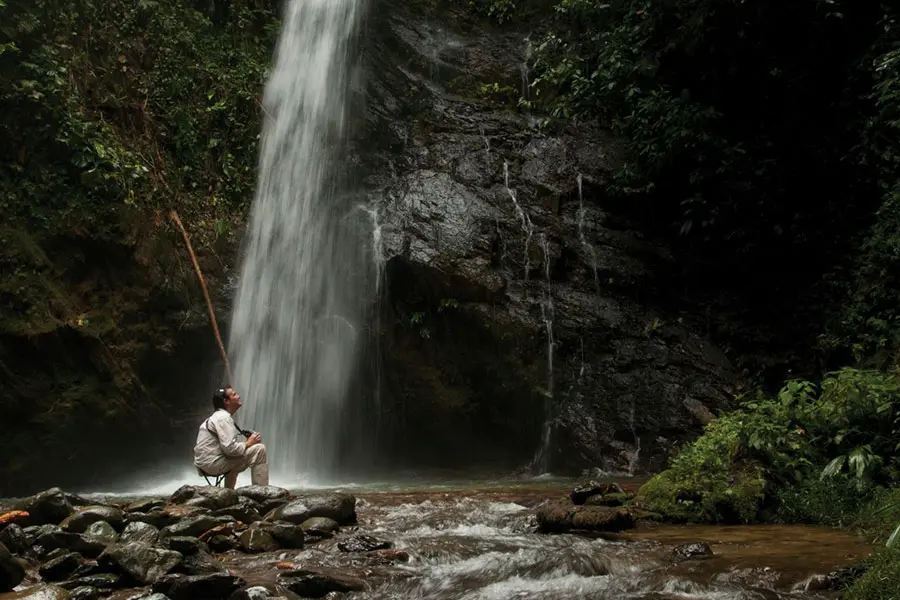Mashpi Reserve, in the heart of the Andean Choco, is incredibly unique, not just for its remarkable biodiversity, but for the continuous discovery of new species, be they flora or fauna. Take, for instance, two of the most recent plant discoveries: Burmeistera catulum and Burmeistera velutina, which are both part of the Campanulaceae family of bellflowers.
The Burmeistera catalum

While these two species are closely related to one another, they are distinct in appearance. The Burmeistera catulum features a more pronounced number of trichomes (like short, fine hairs) that encompass the stem and flower, which is essentially colorless. The leaves of this species range from translucent to purple and seem rather long, taking on an oblanceolate shape.
The Burmeistera velutina

In contrast, the Burmeistera velutina has a large flower measuring between 1.26 and 1.42 inches in size, from which five elegant filaments protrude. Though opaque in tone, they appear white because they are covered in microscopic trichomes. The leaves of the Burmeistera velutina are also slightly wider and greener than those of the Burmeistera catulum.
Pollination
One lively creature present throughout Mashpi Reserve, and the region, is the bat. And, thanks to these nocturnal busy bodies, the Burmeistera have a willing and eager partner to facilitate pollination. What attracts bats to these plant species appears to be the combination of odor with the texture of the trichomes.
Bats, as you know, use echolocation. They rely on their enhanced olfactory (smell) and auditory (hearing) senses to home in on these fascinating plants. And, since the Burmeistera don’t seem to waste any energy on producing a colorful flower to attract an otherwise sight-based pollinator, their odor is the primary attractor for bats.
How were these new species discovered?
These two new discoveries are a result of field research conducted by Nathan Muchhala of the University of Missouri–St. Louis in July of 2018. This endeavor was made possible through Mashpi’s ongoing collaboration with the Universidad Indoamérica, which facilitates research and studies of the Choco based in the Mashpi Reserve.

The area of the reserve where these two species were discovered has been host to several research projects that have led to a total of seven new plant and animal species discoveries. Most recently in 2019, a new type of orchid was logged in this area—the Lepanthes mashpica. Also in 2018, two new types of aquatic insects were discovered along the rivers and streams that flow through this thick and wonderous cloud and rainforest. Prior to that, 2015 saw the discovery of the endemic Hyloscirtus mashpi frog, and 2016 saw the discovery of the beautiful Magnolia mashpi tree.




